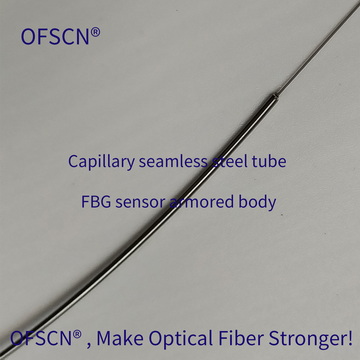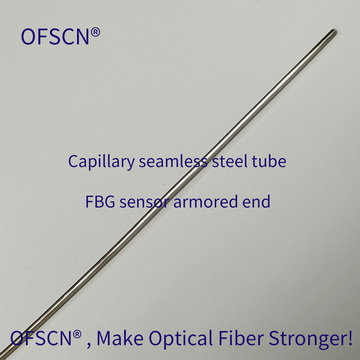This article theoretically analyzes the signal transmission distance of FBG sensors in communication networks, with a focus on the question of "the monitoring distance and transmission distance when implementing long-distance monitoring with FBG sensors." It also provides some physical diagrams of OFSCN® capillary seamless steel tube fiber bragg grating sensors .
1. Analysis of Signal Communication Distance for Fiber Bragg Grating Sensor
For a FBG sensing system in which the wavelength signal has been demodulated, the FBG demodulator is directly connected to the communication network through optical, electrical, or even wireless interfaces. At this point, there is no concept of transmission distance as the known wavelength information and regular communication information are indistinguishable. Therefore, the sensing information can be accessed remotely through the network system using the FBG demodulator.
 |
|
Figure 1 |
2. Analysis of Signal Sensing Distance for FBG Sensor - Factors Affecting Distance
For an internal FBG sensing system where the FBG demodulator and FBG sensor are not in the same location but connected within the same network, the maximum transmission distance is influenced by several factors:
a. Transmission distance from the optical fiber communication system:
Due to the minimal distance attenuation in optical fiber communication systems, FBG sensor signals can be transmitted without relay over distances of 80 to 120 kilometers in traditional G.652 series optical fibers.
For the newer G.654 series optical fibers used in recent years, the transmission distance without relay can reach several hundred kilometers.
 |
|
Figure 2 |
b. The maximum transmission distance is also dependent on the fiber optic grating demodulation equipment used:
The FBG demodulator must be able to emit a sufficiently strong optical signal and receive a weak optical signal. Therefore, it is preferable to use FBG sensors with reflectivity above 90% (OFSCN® capillary seamless steel tube fiber bragg grating sensors have a reflectivity close to 100%).
 |
|
Figure 3 |
3. Long-distance signal transmission also needs to consider optical signal dispersion:
After long-distance transmission, optical signals can experience dispersion, leading to wavelength drift, which can affect the accuracy of measurements (including but not limited to temperature, stress, and strain).
 |
 |
|
Figure 4 |
Figure 5 |
Taking these factors into account, we believe that in scenarios where the FBG demodulator and FBG sensor are physically separated but connected within the same transmission network, assuming the transmission network is functioning normally and the FBG demodulator is powerful, the FBG sensor's sensing signal should be able to transmit over distances of 80 to 120 kilometers. However, the accuracy of the wavelength signal is unknown.
It should be noted that we have not yet encountered a customer application that requires such long-distance transmission of FBG sensor signals. It would require an exceptionally long FBG sensor or a specially designed structure for the FBG sensor network (a combination of communication networks and IoT-based FBG sensor networks). In practical experiments, DCYS has conducted verification at the kilometer level without issues. If you have experience with longer-distance applications, please feel free to contact us and discuss further, as practical applications are the only way to verify theory.
Our philosophy is: "OFSCN®, make optical fiber stronger!"
